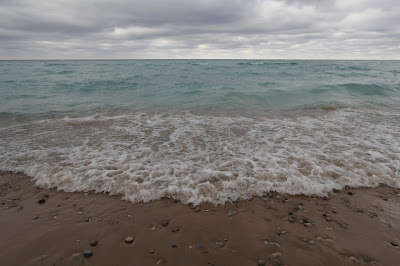 |
| An early spring sunrise (2017) |
Today at 12:15 PM EST, Winter officially ends and Spring begins in
the Northern Hemisphere. The day that this change occurs is known as
the
Vernal (Spring) Equinox. The word
equinox comes from the Latin words
aequus (equal) and
nox
(night). On the Equinox the sun strikes directly on the Equator
resulting in approximately equal periods of day and night across the
globe.
The Earth rotates around its axis approximately once every 24 hours.
However this axis is tilted at 23.5 degrees from the vertical. The
points on the globe that the axis revolves around are referred to as the
North and South Poles. The axis is always pointed toward the same
location in the sky. The North Pole points toward the "North Star" -
Polaris.
At
any given time, fifty percent of the earth is in sunlight (Day) and the
other fifty percent is in darkness (Night). However, because the Earth
is tilted on its axis sunlight does not always strike the Earth at the
same angle. This means during different seasons different parts of the
Earth will receive varying amounts of sunlight and darkness.
As
the earth revolves around the sun, sometimes the North Pole is closer
to the sun, sometimes the South Pole is closer to the sun. When the
North Pole is at its closest, the sun lights a larger portion of the
Northern Hemisphere than it does the Southern Hemisphere. When this
happens, we experience Summer in Mid-Michigan and
the Southern Hemisphere experiences Winter. When the North Pole is at
its furthest from the sun, we experience Winter and the Southern
Hemisphere
experiences Summer. During our Northern Winter, the sun is striking a a
larger portion of the Southern Hemisphere than it is the Northern
Hemisphere. On the Equinox, the poles are essentially perpendicular to the rays of the
sun so locations in the northern and southern hemispheres should receive nearly equal
hours of sunlight and darkness.
 |
| Spring flowers to get you in the mood for spring - Bloodroot (Sanguinaria canadensis) |
Despite what most people think,
the hours of daylight and night experiences on the Equinox are not perfectly equal. Mt. Pleasant is located at 43 degrees
36 minutes north of the equator. On the equinox, it experiences 12
hours 9 minutes worth of daylight. A location located at 43 degrees 36
minutes south of the equator will receive approximately the same length
of daylight. There is another lesser known event that occurred over the weekend - the
Vernal Equilux.
Equilux means "equal light". On Saturday March 17th, Mid-Michigan (and many other places in the Northern Hemisphere) received approximately 12 hours of daylight and 12 hours of darkness.
The hours of daylight that Mt. Pleasant receives each day will
grow until it reaches 15 hours 24 minutes around the Summer Solstice.
Then our hours of sunlight will diminish until on the Winter Solstice we
experience only 8 hours 57 minutes of daylight, before increasing
again.
















































